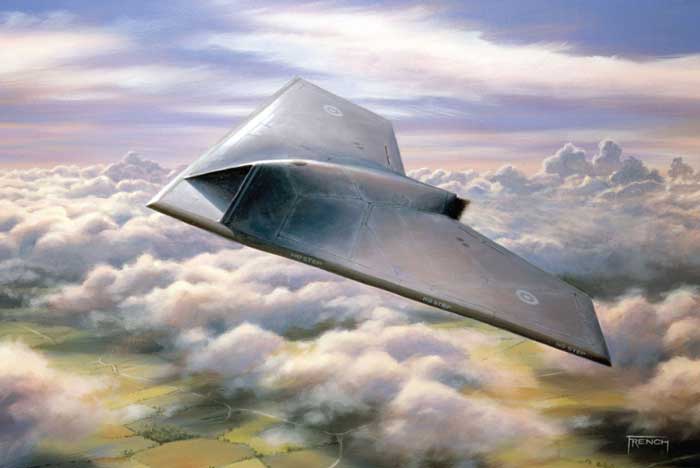Shaping a Partnership for a “Transformational” Capability
At the BAE Systems Media Center during the Farnbourgh Air show, an update was provided with regard to the UK’s Taranis UCAV. The program is the UK’s leverage point into any US or European collaborative programs, and underwrites the development of autonomous UK capabilities in the UCAV area. The UK has collaborated with the US in this area as well as in various ways with European nations. Indeed, with the budget cuts envisaged a key question facing the UK is how to maintain its program and to attach it to partners in shaping an operational capability in the UCAV area.
 The Taranis Demonstrator Vehicle (Credit Illustration: Team Taranis)
The Taranis Demonstrator Vehicle (Credit Illustration: Team Taranis)
- To quote Aviation Week and Space Technology:
The big question on UCAS will be whether the U.K. aligns itself with the U.S., having previously worked on that front, or “will we see convergence between Taranis and Neuron?” [Selex Galileo Chief Executive Steve] Mogford asks. And if there is rapprochement within Europe, will it come “in time for there still to be an indigenous fixed-wing capability for the program?”
The briefing did provide some insight into the British approach to shaping a business model for the development effort.
- To quote the BAE Systems press release of July 19th 2010:
Representing the pinnacle of UK engineering and aeronautical design, Taranis is an informal partnership of the MOD and industry talents including BAE Systems, Rolls Royce, QinetiQ and GE Aviation.
- The first key element of the business model is the partnership between MOD’s Defence Equipment and Support Agency and the core team members to share information and shape a demonstrator capability. The charter provides the basis for fielding a joint MOD-Industry funded demonstrator.
According to background information provided by BAE Systems on Team Taranis: “A Project Charter was signed between DE and S, BAE Systems, Rolls-Royce, QinetiQ and GE Aviation to work together to design, manufacture and test and fly an experimental mission representative UAV system. With BAE Systems as prime contractor to DE & S, the Team Taranis partners have worked closely with the customer and Industry to develop and demonstrate new technologies on a flying demonstrator.”
As one presenter at the media briefing underscored:
What the charter does within the concept of the program is it brings not only the industrial players together, but also the technology specialists and of course, the primary points of contact for the customers themselves. And the fact that we have the charter creates a set of behaviors and a common set of objectives and goals for a successful program. And by doing that, we’re able to actually take very, very real decisions about the direction of the program to maintain the overall objective in a communicative environment… It is a very good way of actually evolving the capability and getting people to make joint decisions together. - A second key element of the business model is shaping across the team “common enabling technologies.” As one of the speakers at the media brief underscored,
In the concept of the last eight or nine years, we progressed through a series of demonstrations. All the way through the common enabling technologies have been autonomy, and the integration around ground station and the architecture of the system and exploitation of the information systems in common across the whole family of vehicles. So we have a common architecture and construct around the entire demonstration process.”
And the idea of the program is to do that very well, do it once and then apply it across the different air vehicles and the different concepts, which has been achieved in the concept of Mantas 30, which is heading towards production, and of course, the Taranis demonstrator. - A third key element of the business model is to focus on close integration between the design and sustainment aspects of the demonstrator. At the heart of the approach is to ensure that the firms helping build the vehicle will be the firms supplying support for the vehicle.
We recognize that going forward to be cost effective, something like Taranis has to buy its way into the force, because it has to be cost effective. And so we start to think about how that would work in the context of such a system and part of that is how many frontline aircraft do you need to each support aircraft?
How can the ground-based mission planning system have embedded training within it to actually support synthetic relationships to the way the whole system comes together? And by bringing those things together, you perhaps don’t have to fly the vehicle as often as you might do in today’s world thereby making the cost of ownership a lot cheaper by actually integrating the manufacturing organization with the support organization….
And of course, by perhaps thinking of how we deal with surging and resources for the MOD as well as industry, and perhaps bringing that closer together may also give us some advantages as well in the overall cost.
In short, as was summarized by one presenter at the media briefing:
“Our mission is to create a UK partnership, which is truly transformational capability, that’s exactly where we’re having success today.”
———-
***Posted on September 7th, 2010


